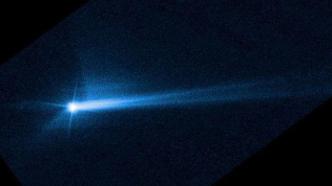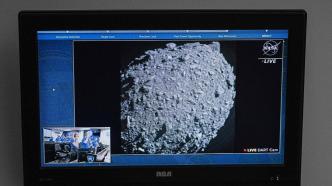

The James Webb Space Telescope has discovered for the first time an exoplanet orbiting a star, officially dubbed LHS 475 b (imagined).
The James Webb Space Telescope has discovered an exoplanet orbiting a star for the first time, according to NASA. Officially numbered LHS 475 b, the planet is located 41 light-years away in the constellation Octagon and is almost the same size as Earth, 99% of Earth's diameter.
In this study, a research team led by Kevin Stevenson and Jacob Lustig-Yaeger of the Johns Hopkins University Applied Physics Laboratory used NASA's Transiting Exoplanet Survey Satellite (TESS) to identify the target and then used Webb Space Telescopes confirmed it. The Webb Space Telescope's Near Infrared Spectrograph captured the planet in just two transit observations. "It's a small rocky planet," Stevenson said.
"These observations open up many possibilities for future studies of rocky planetary atmospheres with the Webb Space Telescope, giving people a new understanding of Earth-like planets outside our solar system," said Mark Clampin, director of the Astrophysics Division at NASA Headquarters.
Of all the telescopes in operation, only Webb can characterize the atmospheres of Earth-sized exoplanets. The team attempted to assess what was in the planet's atmosphere by analyzing the planet's transmission spectrum. While the data suggested it was an Earth-sized, terrestrial planet, they didn't yet know if it had an atmosphere.
Erin May of the Johns Hopkins University Applied Physics Laboratory said: "The data from the Webb Space Telescope are 'beautiful', it is very sensitive, and it can easily detect a range of molecules, but we can't yet understand the planet. atmosphere to draw any definite conclusions."
While the team can't say for now what's in the atmosphere, they can be sure what's not. "We can rule out some terrestrial-type atmospheres, which cannot have a thick, methane-dominated atmosphere like Titan's," Lustig-Yaeger explained.

The spectra in the figure show that Webb did not observe any elements or molecules in detectable quantities. The data (white dots) agree with a featureless spectrum representing a planet without an atmosphere (yellow line), and the purple line represents an atmosphere of pure carbon dioxide, which cannot be compared with the flat line (featureless spectrum without an atmosphere) at current precision. To distinguish, the green line represents a pure methane atmosphere.
The research team also stated that although there is a high probability that the planet has no atmosphere, it still cannot rule out that there are some other atmospheric components, such as a pure carbon dioxide atmosphere. But Lustig-Yaeger points out that a 100% carbon dioxide atmosphere is much denser and harder to detect. The research team needs more precise observations to determine whether it is a pure carbon dioxide atmosphere or no atmosphere at all, and they plan to obtain more spectral data during observations this summer.
Data from the Webb Space Telescope also showed that the planet was several hundred degrees hotter than Earth. Therefore, if clouds are detected, researchers may conclude that the planet is more like Venus. Because Venus has a carbon dioxide atmosphere and is permanently shrouded in thick clouds.
"Currently we are at the forefront of studying small rocky exoplanets, but are just beginning to understand what their atmospheres might look like," Lustig-Yaeger said.
In addition, Webb Space Telescope's precise light curve also shows that the planet completed an orbit in just two days. Although LHS 475 b is closer to its parent star than any planet in the solar system, the latter is a red dwarf less than half the temperature of the sun, so researchers predict it may still have an atmosphere.
(Originally titled ""Webb" discovered an exoplanet for the first time")


